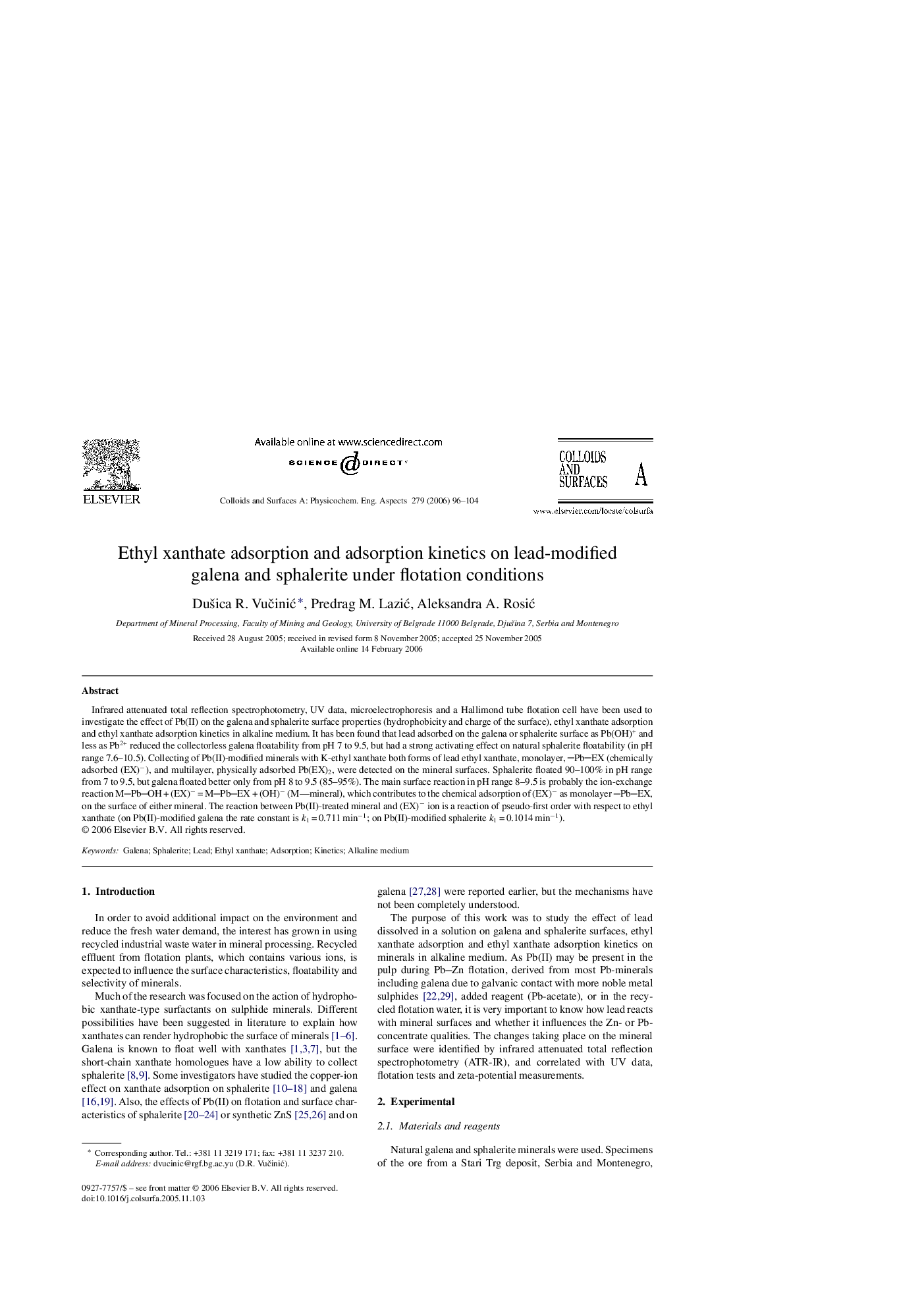| Article ID | Journal | Published Year | Pages | File Type |
|---|---|---|---|---|
| 598434 | Colloids and Surfaces A: Physicochemical and Engineering Aspects | 2006 | 9 Pages |
Infrared attenuated total reflection spectrophotometry, UV data, microelectrophoresis and a Hallimond tube flotation cell have been used to investigate the effect of Pb(II) on the galena and sphalerite surface properties (hydrophobicity and charge of the surface), ethyl xanthate adsorption and ethyl xanthate adsorption kinetics in alkaline medium. It has been found that lead adsorbed on the galena or sphalerite surface as Pb(OH)+ and less as Pb2+ reduced the collectorless galena floatability from pH 7 to 9.5, but had a strong activating effect on natural sphalerite floatability (in pH range 7.6–10.5). Collecting of Pb(II)-modified minerals with K-ethyl xanthate both forms of lead ethyl xanthate, monolayer, PbEX (chemically adsorbed (EX)−), and multilayer, physically adsorbed Pb(EX)2, were detected on the mineral surfaces. Sphalerite floated 90–100% in pH range from 7 to 9.5, but galena floated better only from pH 8 to 9.5 (85–95%). The main surface reaction in pH range 8–9.5 is probably the ion-exchange reaction MPbOH + (EX)− = MPbEX + (OH)− (M—mineral), which contributes to the chemical adsorption of (EX)− as monolayer PbEX, on the surface of either mineral. The reaction between Pb(II)-treated mineral and (EX)− ion is a reaction of pseudo-first order with respect to ethyl xanthate (on Pb(II)-modified galena the rate constant is k1 = 0.711 min−1; on Pb(II)-modified sphalerite k1 = 0.1014 min−1).
